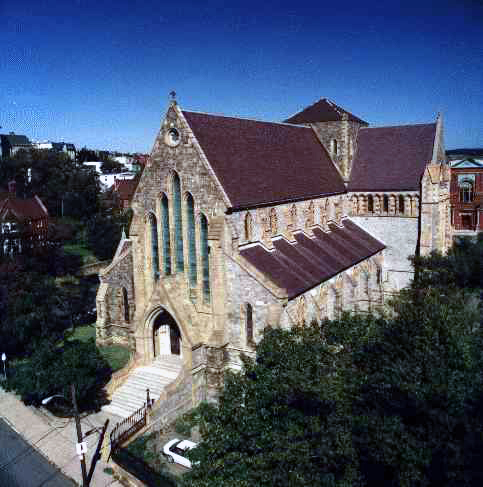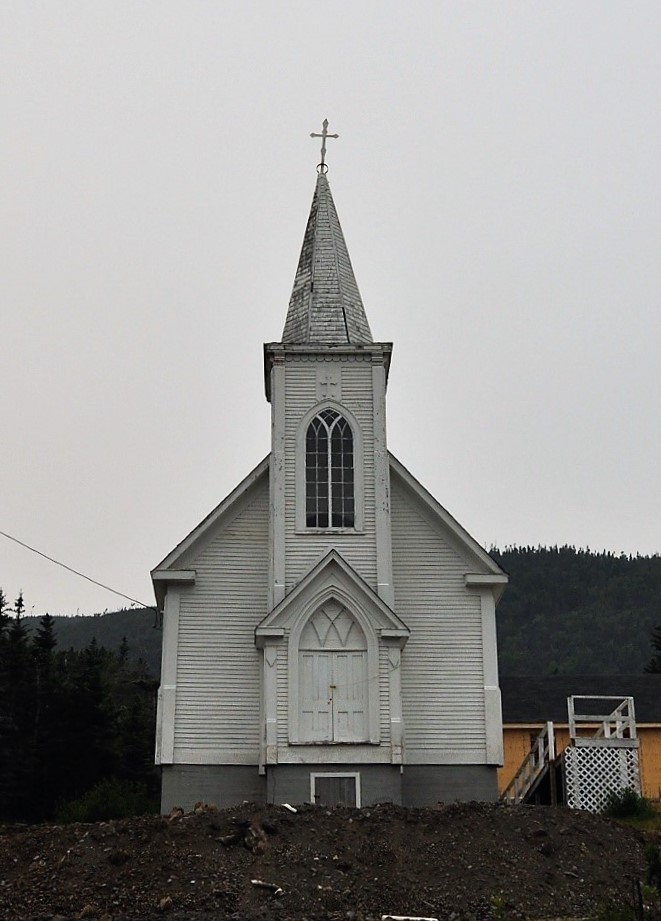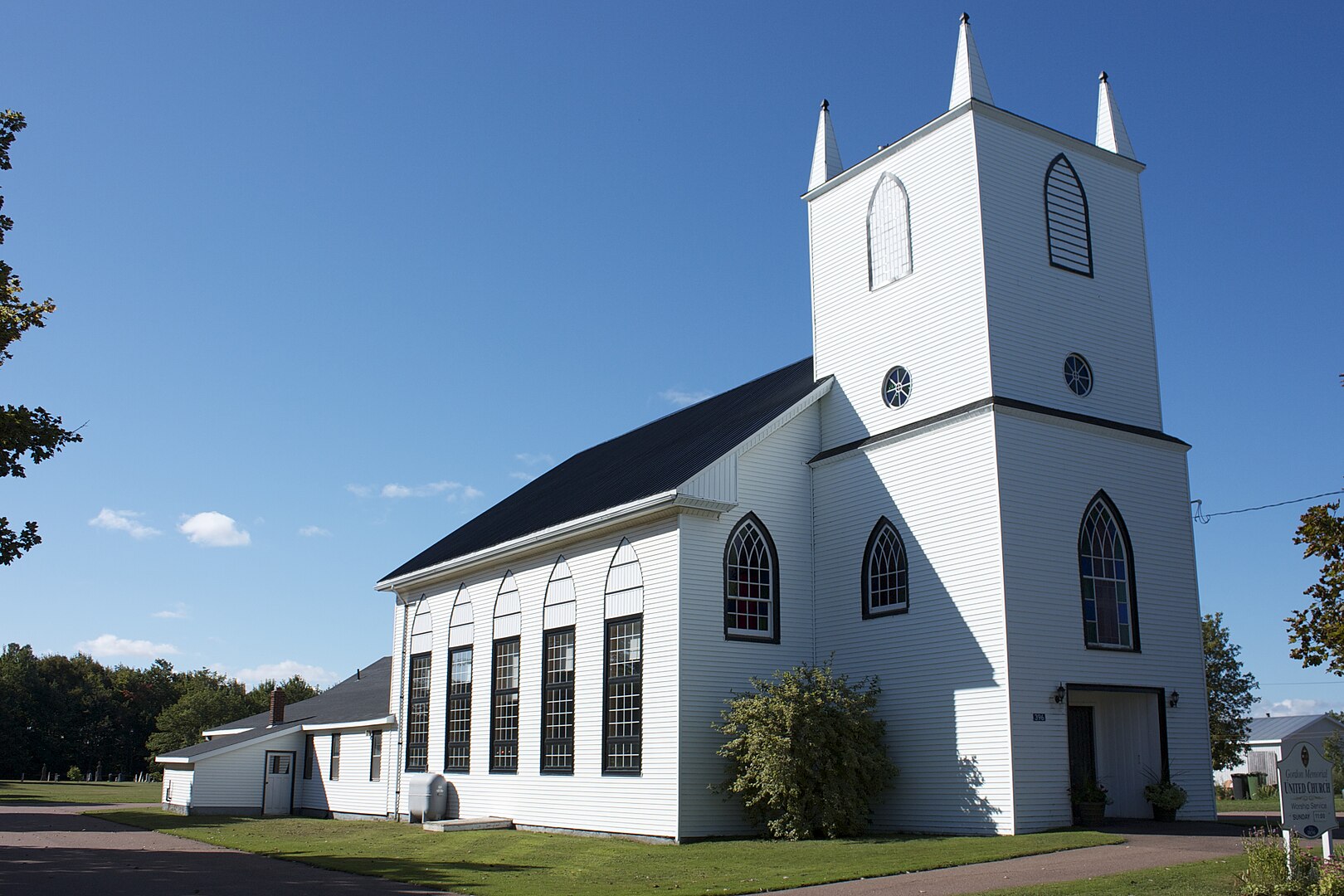
Holy Redeemer Anglican Church
Spaniards Bay, 1891
Gothic Revival architecture in Newfoundland and Labrador and Prince Edward Island is a distinct reflection of the broader Gothic Revival movement that swept across Canada during the 19th and early 20th centuries. This style, which took inspiration from medieval Gothic architecture, is characterized by pointed arches, steep gables, decorative tracery, and a general emphasis on verticality, all meant to evoke a sense of grandeur and spiritual elevation.
Newfoundland and Labrador:
In Newfoundland and Labrador, Gothic Revival architecture is most commonly seen in the region’s churches. Many of these were built during the 19th century when there was a wave of religious building projects, particularly in Anglican and Roman Catholic communities. One prominent example is St. John the Baptist Anglican Cathedral in St. John’s, which began construction in 1847. Designed by George Gilbert Scott, an English architect known for his work on Gothic Revival churches, the cathedral features many of the typical elements of the style: pointed arches, ribbed vaults, and lancet windows.
The use of Gothic Revival in Newfoundland was closely tied to its maritime history and the influence of British colonialism. Churches were often built by shipbuilders and craftsmen who applied their skills to woodworking and stone masonry, creating structures that are both functional and artistically detailed. The use of local materials, like wood in many rural churches, gives Newfoundland’s Gothic Revival buildings a unique regional flavor.
Prince Edward Island:
In Prince Edward Island, Gothic Revival architecture also found its primary expression in religious buildings. The Basilica of St. Dunstan in Charlottetown is a striking example. Built between 1896 and 1907 after a fire destroyed the earlier church, it is noted for its twin spires, flying buttresses, and stained-glass windows, all hallmarks of the Gothic Revival style. The basilica is a dominant feature of Charlottetown’s skyline and is considered one of the most significant examples of this architectural style on the island.
Many smaller churches across PEI also adopted Gothic Revival elements, especially in rural communities where the style was seen as a connection to larger, global religious movements. These buildings are often characterized by their wooden construction, steeply pitched roofs, and simple yet elegant design, reflecting the modest resources of the island’s communities at the time.
Significance:
In both provinces, Gothic Revival architecture was a way for communities to express their religious devotion, while also showcasing craftsmanship and regional adaptations of a global architectural style. While larger stone cathedrals are found in major towns and cities, rural areas often feature more modest wooden churches that still retain Gothic elements like pointed windows and detailed woodwork.
This style remains an important part of the architectural heritage of Newfoundland and Labrador and Prince Edward Island, with many Gothic Revival buildings continuing to serve religious and community functions today.
Newfoundland and Labrador
Cathedral of Immaculate Conception
Harbour Grace, 1892

Cathedral of St John the Baptist
St John’s, 1847

Holy Trinity Convent and Chapel
Witless Bay, 1890

Immaculate Conception Church
Cape Broyle, 1947

St Patrick’s Church
Carboneau, 1891

St-Patrick’s Church
St-John’s, 1855

St-Patrick’s Church
Woody Bay, 1875

St-Paul’s Church
Harbour Grace, 1837

St-Peter’s Church
Twillingate, 1845

St-Thonas’s Church
St-John’s, 1836

Prince Edward Island
Gordon Memorial United Church
Alberton, 1857

Immaculate Conception Church
Prince County, 1892

St-Brigid’s Church
Foxley River, 1873

St-Bunstans Basilica
Charlottetown, 1916

St-John’s Presbyterian Church
Belfast, 1824

St-John’s the Baptist Church
Miscouche, 1892

St-Mary’s Roman Catholic Church
Indian River, 1902

St Patrick’s Roman Catholic Church
Prince County, 1890

St-Peter’s Cathedral
Charlottetown, 1869

St-Simon St Jude
Tignish, 1860

